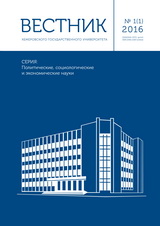The paper discusses how employment in the Russian industry evolved over the period of 2000 - 2014. It starts with tracing one of the key labor market indicators: the level and dynamics of employment. Total employment in the Russian industry and employment in firms and enterprises (i.e. in the formal sector) declined over the whole period of 2000 - 2014. But employment in the informal sector was on the rise. The reallocation of labor into informality reduces productivity and growth. Then the author analyzes how the Russian industrial enterprises adapted to the output fall during the 2008 - 2009 economic crisis. Firms did this in three major ways. First, Russian firms froze new hires without active use of involuntary labor shedding. The second way is cutting working hours as firms shifted their personnel into administrative leaves or into short-time work. The third way is flexible wages.
rynok truda, zanyatost', promyshlennost', gibkost' rynka truda, labor market, employment, industry, labor market flexibility

















